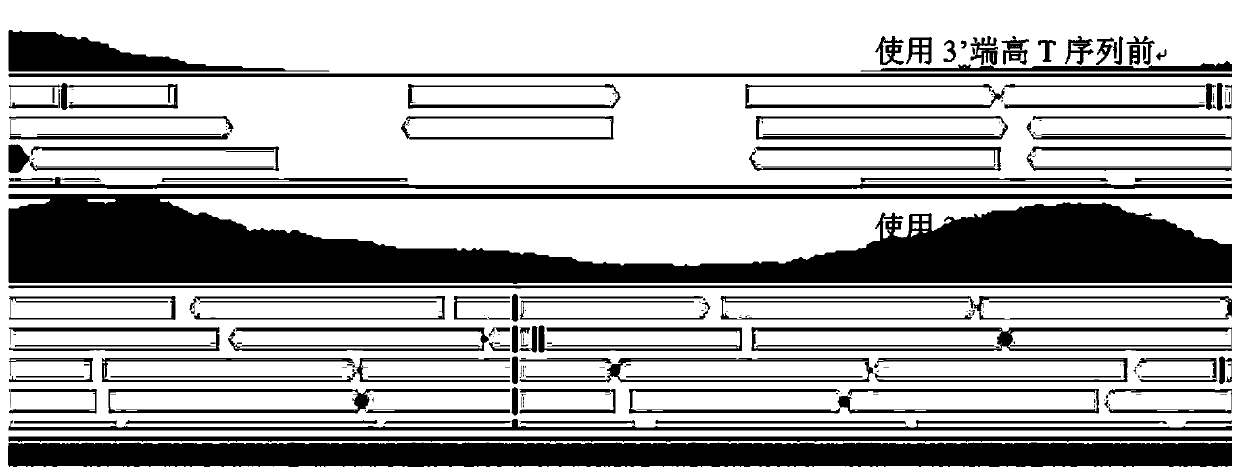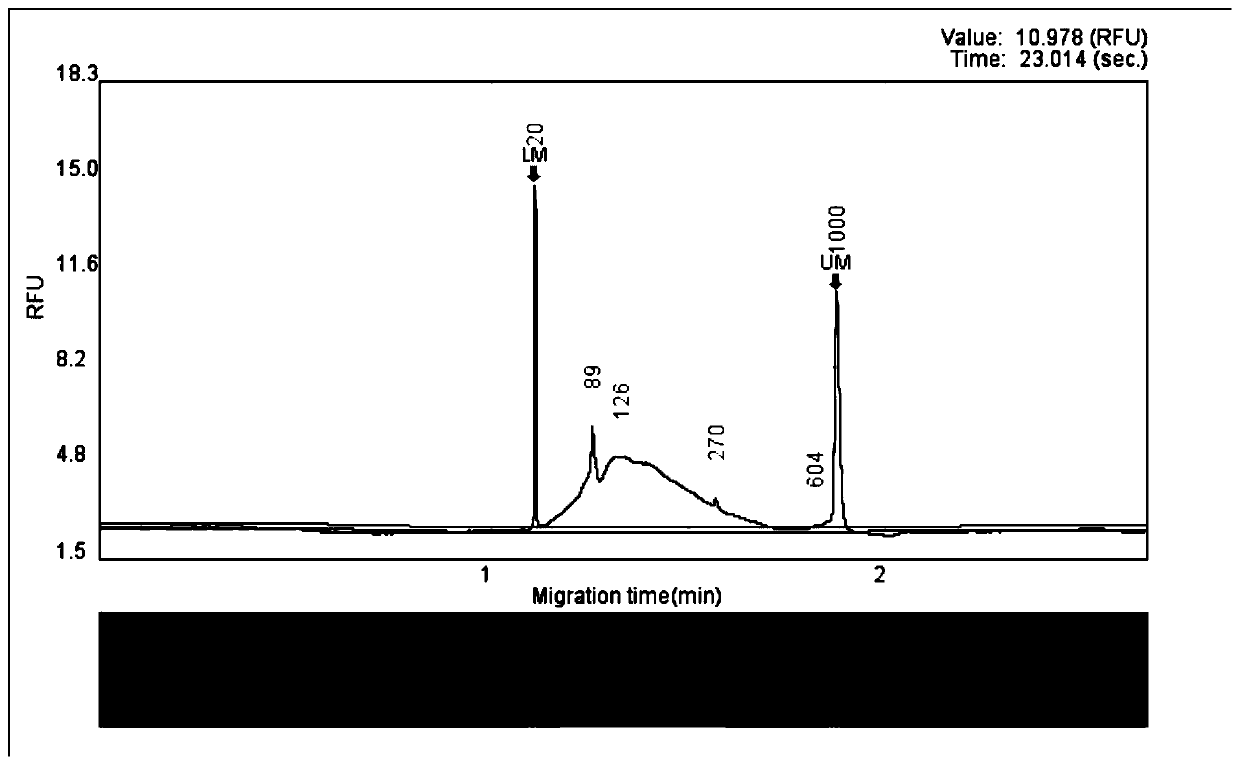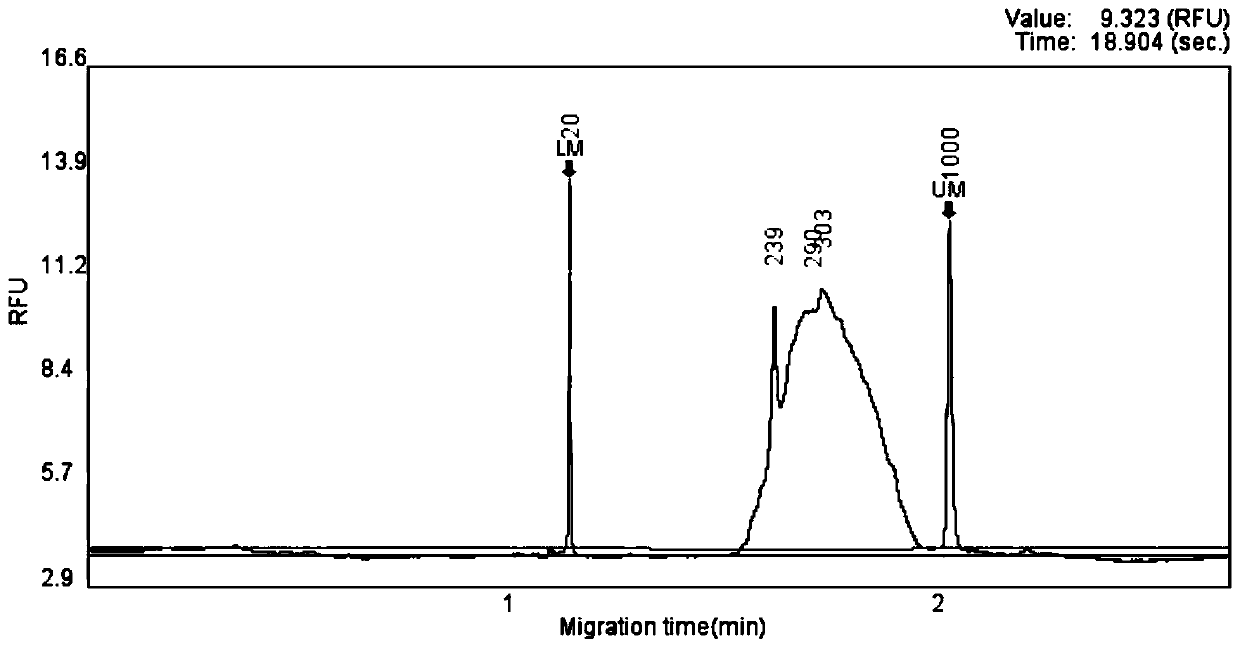Screening method of infective gene capture probe related to dementia, capture genome, product and application
A technology for capturing probes and pathogenic genes, which is applied in biochemical equipment and methods, recombinant DNA technology, and microbial determination/inspection.
- Summary
- Abstract
- Description
- Claims
- Application Information
AI Technical Summary
Problems solved by technology
Method used
Image
Examples
Embodiment 1
[0086] Example 1 Preparation of capture probes for human dementia-related genes
[0087] This example is aimed at the relevant pathogenic genes of Alzheimer's disease, frontotemporal dementia, Parkinson's disease-related dementia, amyotrophic lateral sclerosis-related dementia and dementia with Lewy bodies: APP, PSEN1, PSEN2, APOE, MAPT, SNCA, FUS, TARDBP, CHCHD10, CHMP2B and TBK1, according to the following design rules of the capture probe set, the capture probes for capturing human dementia-related genes were obtained:
[0088] (a) The length of the probe is 121bp;
[0089] (b) probe design to merge adjacent regions;
[0090] (c) The probe design interval extends 20bp from the target interval to the two wings;
[0091] (d) The probe reference is the sense strand of the genome;
[0092] (e) The consensus sequences on both wings of the probe are shown in SEQ ID NO.1 and SEQ ID NO.2;
[0093]
[0094]
[0095] (f) Ensure probe specificity by comparing whole genome in...
Embodiment 2
[0104] Example 2 Specific capture and sequencing
[0105] This embodiment uses the Alzheimer's disease, frontotemporal lobe dementia, Parkinson's disease-related dementia, amyotrophic lateral sclerosis-related dementia and Lewy body dementia-related gene capture probe set provided in Example 1, and based on the liquid phase Hybrid capture technology enriches target sequences. The technical route of liquid-phase hybridization capture is: 1) preparing a hybridization probe library, 2) using the probes to enrich the target gene, and 3) sequencing the enriched DNA sequence with a high-throughput sequencer. The use of liquid phase hybridization technology can effectively enrich the target gene, reduce the requirement of sample size, and better control the cost of sequencing.
[0106] The library construction method comprises the following steps:
[0107] 1. DNA extraction and fragmentation
[0108] DNA was extracted from 6 peripheral blood samples using the QIAamp DNA Blood Mini...
Embodiment 3
[0151] Example 3 Alzheimer's disease, frontotemporal dementia, Parkinson's disease-related dementia, amyotrophic lateral sclerosis-related dementia and Lewy body dementia-related gene screening
[0152] This example provides a method for screening genes related to Alzheimer's disease, frontotemporal dementia, Parkinson's disease-related dementia, amyotrophic lateral sclerosis-related dementia, and dementia with Lewy bodies. Genetic screening for Alzheimer's disease, frontotemporal dementia, Parkinson's disease-related dementia, amyotrophic lateral sclerosis-related dementia, and Lewy body dementia. The library prepared in Example 2 was subjected to paired-end sequencing on the Illumina sequencing platform. At the same time, the tag sequence on the sample is also sequenced. Analyze the source of sequencing data through data analysis and perform data analysis. The data were compared with the UCSChg19 database through BWA. The results are shown in the table below:
[0153] ...
PUM
 Login to View More
Login to View More Abstract
Description
Claims
Application Information
 Login to View More
Login to View More - R&D
- Intellectual Property
- Life Sciences
- Materials
- Tech Scout
- Unparalleled Data Quality
- Higher Quality Content
- 60% Fewer Hallucinations
Browse by: Latest US Patents, China's latest patents, Technical Efficacy Thesaurus, Application Domain, Technology Topic, Popular Technical Reports.
© 2025 PatSnap. All rights reserved.Legal|Privacy policy|Modern Slavery Act Transparency Statement|Sitemap|About US| Contact US: help@patsnap.com



